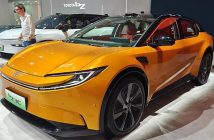+++ ALFA ROMEO got on Instagram again to tease the coming supercar that will debut on August 30. The image is a bit funky, and so is the caption. The picture shows the steering wheel, shot from underneath. The hub center is the first unusual bit, being a monochrome Alfa Romeo logo. The Italian brand’s steering wheels usually feature a full-color logo except in the Quadrifoglio trims that bear a black and silver design. Vintage Alfas like the GT Junior models of the 1960s and 1970s were known for silver logos. They were also known for drilled steering wheel spokes, which might be featured in the teaser as well. No current Alfas I know of use metal-looking steering wheels spokes, and none contain what look like dials set into the bottom spoke. Even the limited-edition Giulia GTAm took the Giulia’s regular wheel and replaced plastic with carbon fiber for the lower spoke. Then there’s the caption: “792 hours and less than #6 weeks left to ignite your spirit with #AlfaRomeo. Witness history unfold on August 30th, as #Courage and passion #Converge to give birth to a visionary #Creation. Save the date!” That’s an oddball number of hours for a countdown timer. The guess is that this is a reference to the horsepower figure engineers coaxed from the twin-turbo 3.0-liter Nettuno V6 poached from the Maserati MC20. In the MC20, the engine produces 630 horsepower. Rumors out of Europe have said the Maserati mill is going to share the Alfa Romeo’s engine bay with at least one electric motor and make 792 horsepower; a tidy 162 horses more than the MC20 and totally achievable with a single flux capacitor. Unless the Italians are taking a MacGuffin from Hitchcock’s playbook, 6 weeks away could foreshadow the 6C name instead of the 33 name that’s worked its way into the conversation. The livestreamed debut from the Alfa Romeo museum in Arese, Italy is a month away. +++
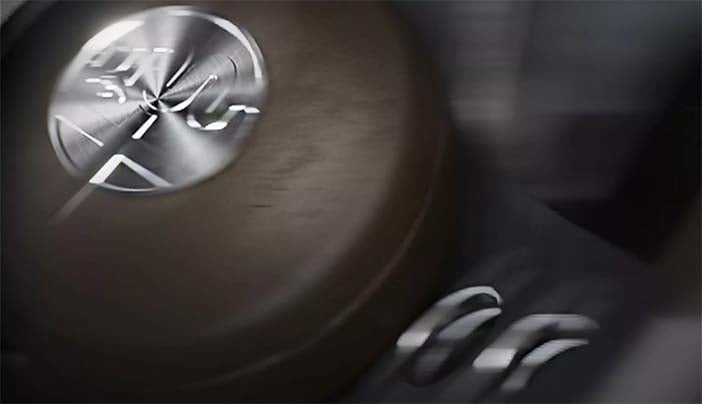
+++ The V8 engine is an integral part of the FORD Mustang’s identity and one that the company won’t replace for batteries and an electric motor anytime soon. Ford is committed to offering its pony car with an internal combustion engine and has no plans to sunset the powertrain in the model. Mark Rushbrook, global director of Ford Performance Motorsport, told that the company would build the V8 engine for “as long as we can”, adding that the Blue Oval hasn’t selected a retirement date for the 8-cylinder engine just yet. Mustang’s global brand manager, Jim Owens, echoed similar sentiments. He said the automaker is still investing in V8 engines for future models even as the automaker ramps up battery-electric vehicle production. However, government regulations might force Ford to alter those plans. Tightening emissions standards have automakers downsizing engines and adding turbochargers to comply with the evolving rules. Ford wouldn’t say how it planned to keep the V8 in the Mustang, but Mustang chief vehicle engineer Tim Smith cryptically revealed that the company is “always testing everything”. One possibility that could keep the combustion engine alive is synthetic fuels. More than one automaker is exploring the alternative technology, with Porsche, Stellantis, and others testing e-fuel. Bentley attended this year’s Goodwood Festival of Speed with a fleet of vehicles using biofuel. The drop-in replacement fuels could reduce emissions without the need to modify existing combination engines. Bentley, which installed a large biofuel tank at its Crewe headquarters, used the stuff in its oldest surviving model: the 1920 EXP2. The European Union had initially proposed banning the sale of new combustion-powered cars after 2035. However, before finalizing the rules earlier this year, regulators proposed and passed a carve-out for the sale of e-fuel-powered vehicles after the deadline. Ford hopes the next-generation Mustang will entice younger buyers to the brand. With the Chevrolet Camaro and Dodge Challenger bowing out, the Mustang will be free of competition from its crosstown rivals in nearly 20 years, and it’s not the first time Ford has been alone. Ford doesn’t think it can convert every former Camaro and Challenger fan, but it believes a core segment of buyers enjoys sports cars. The entry-level 2024 modelyear Mustang gets customers a 2.3-litre turbocharged 4-cylinder engine with 324 hp. The V8-powered Mustang GT delivers 490 hp. The pair are just 2 of the 14 Mustang variants Ford has already revealed, and not all of them are roads legal. +++
+++ KIA ’s latest all-electric offering, the EV5, will be revealed at the Chengdu Motor Show next month. The EV5 is expected to start in the region of €39.000 in the Netherlands and will be slightly smaller in size than the EV6. We already have a very good idea of what it will look like, with Kia showing it off in concept form at the Shanghai Motor Show last March. The EV5 will be powered by an 82 kWh battery pack and will have up to 600 km of range. And while the EV5 will ride on the same E-GMP platform as the EV6 and Hyundai Ioniq 5, it will feature a 400 volt system as opposed to the 800 volt setup found in the aforementioned models. That means it will take slightly longer to charge, although it also allows it to be more affordable. Undoubtedly, the BYD Atto 3 and Tesla Model Y will be the EV5’s main competitors in China. While this time last year the Model Y may have been viewed as more of an EV6 competitor, pricing has since dropped significantly. The Y now starts at only ¥263.900 in China, making it an affordable entry-level crossover. Although China is the EV5’s main focus market, it will be available globally. In North America and Europe, the EV5 is expected to feature an NCM battery with Chinese versions using LFP packs. The EV5 is expected to go on sale in China later this year. Expect European and US order books to open at some stage in 2024. +++
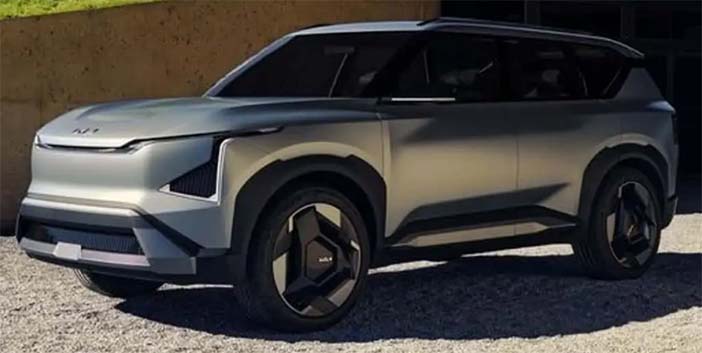
+++ Revolutionizing the automotive landscape, LOTUS announced the grand opening of its first European flagship global brand centre in the luxury heartland of Mayfair, London, a testament to the brand’s transformation into a global luxury performance powerhouse. The ceremony was a momentous occasion, with Lotus’s incredible new lineup of powerful electrified cars, as well as celebrities like actors John Boyega and Florence Pugh in attendance. Known as Lotus London, this architectural masterpiece, nestled at 73 Piccadilly, embodies the fusion of luxury, technology and culture. It stands as a testament to Lotus’s longstanding dedication to technology, performance, and heritage. This unique setup, with a digital-first approach, introduces customers to an exclusive and immersive journey into the Lotus universe. Embracing the modern ethos of customer-centricity, Lotus London presents a digital-rich environment featuring a VIP lounge and bespoke digital experience. The store will allow customers to personalise their vehicles in the company of experts. The brand centre also serves as an artistic gallery, rotating exhibits of Lotus’s rich 75-year history, celebrating everything from its Formula 1 triumphs to its silver screen icons. This flagship store goes beyond merely being a showroom: it’s a launchpad for Lotus’s latest creations. On display are the next-generation vehicles such as the hyper-SUV Eletre, Emira sports car and Evija hypercar. Customers can also indulge in a variety of Lotus merchandise, including newly announced co-branded products like the LS60 Wireless floor speakers, a collaborative effort with KEF. Lotus’s first digitally infused ‘Hyper Space’ in Europe epitomises the brand’s global performance vision. This aligns with the brand’s Vision80 strategy revealed in 2018, outlining their transformation from a heritage automotive company to an all-electric, intelligent luxury mobility provider by 2028. These brand centres will play a pivotal role in Lotus’s customer-centric global strategy. They aim to foster direct relationships and craft personalised experiences for consumers. Lotus plans to launch additional brand centres globally, targeting key markets in Europe, Asia, and the US. Lotus Group’s Chief Commercial Officer, Mike Johnstone, expressed the company’s ambition stating, “Our new store signifies our commitment to transform Lotus into a global luxury performance brand. With the demand for our products growing, we have ambitious plans to scale rapidly by 2028. Our brand centres worldwide will be instrumental in building both the Lotus brand and lasting relationships with our consumers”. This landmark opening follows Lotus’s delivery of the Vision80 promise last year with the world premiere of the Eletre. The production of this vehicle is underway, with delivery to UK and European customers anticipated later this summer. The opening of the Lotus London flagship store marks an exciting chapter in Lotus’s transformation journey, carving its space as a global luxury performance brand in the heart of one of the world’s most vibrant cities. +++
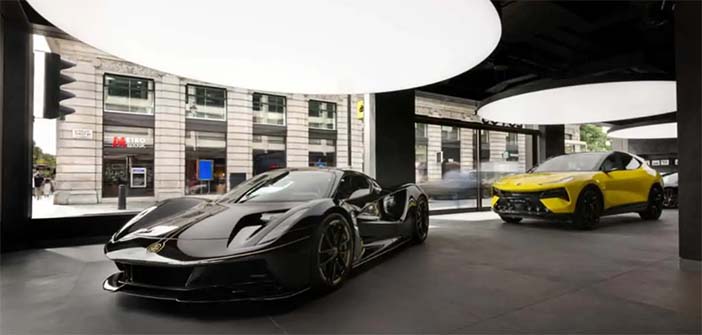
+++ MASERATI could be working on a hardcore version of the MC20 mid-engined supercar that offers even more performance both on the road and on the track. It was recently revealed that Maserati has filed a trademark application for the name ‘MCXtrema’ with both the Italian Patent and Trademark Office and the European Intellectual Property Office. This trademark application is for “Sports cars; Motor racing cars”, and while it does not detail what model the nameplate could be used for, it’s safe to assume it’s for the firm’s only ‘MC’ branded model, the MC20. Despite the uncertainty around the trademark application, the name could be used for a new version of the MC20 road car, as opposed to a new racing variant that Maserati could build alongside the new MC20-based GT2. The name ‘Extrema’ is very similar to the ‘Estrema’ badge that Alfa Romeo recently introduced on new versions of both the Giulia and Stelvio. It would be logical for Maserati to be planning a more powerful version of the MC20. While it is already extremely quick thanks to its 630 hp, 3.0-liter twin-turbocharged V6, I have no doubt that this engine can deliver more grunt with some minor alterations. It’s also commonplace for car manufacturers to release more powerful versions of their supercars like Lamborghini has done multiple times with the Huracan and like Ferrari is bound to do with the current 296 GTB. If this is what Maserati is planning, it’s not beyond the realm of possibility that it could fit the MC20 with an electric motor and a small battery pack, turning it into a plug-in hybrid to rival the Ferrari 296 with upwards of 800 hp. Maserati has already confirmed that a tri-motor, all-electric MC20 is in the works and will have 700 hp so it would be nice if shoppers had the option of a combustion-powered alternative with similar performance. +++
+++ A line-up of ‘pure-electric luxury’ vehicles from Automobili PININFARINA will be shaped by the striking Pura Vision concept, a rakish new electric ‘luxury utility vehicle’, or e-LUV, as the company defines it. CEO Paolo Dellachà said the concept is “the bridge from our present to an exciting new chapter”, hinting at the potential for the Pura Vision to heavily inspire future production cars. Autointernationaal.nl first reported Pininfarina’s plans for an SUV in 2020, with then design boss Luca Borgogno suggesting it would ultimately enter production as a Ferrari Purosangue rival priced from around €360.000 in the Netherlands. Plans to evolve the Pura Vision from concept to customer car have since gone quiet, but it nonetheless hints strongly at what to expect from the Italian brand in the near future. Showing Autointernationaal.nl around the concept in 2020, Borgogno described it as “extremely close to production”. While dramatically styled and highly luxurious, it isn’t an especially unrealistic proposition. The design features bladed headlights that will appear on future Pininfarina models and, according to new chief design officer Dave Amantea, it “embraces the DNA of iconic vehicles from Pininfarina’s past, to shape the future”. The silhouette, sculpted mostly from lightweight materials, including carbonfibre, is a “unique sculptural statement”, with a low front end and flared arches inspired by the iconic Cisitalia 202 of 1947; the first vehicle to enter the Museum of Modern Art’s collection in New York. The cabin heralds another radical new approach to interior design, with a stringent focus on functionality and space. It’s a radically different approach from that of the compact Battista, which majors on driver engagement. ‘Floating’ front seats and a wave-shaped, raised rear bench (all inspired by sailing vessels) emphasise the drive for refinement and luxury, while a low roofline aims to emulate the feel of a sports car. The driving position, the brand said, is also one more in common with that of a 2-seater, despite the car’s raised proportions Pininfarina interior design director Francesco Cundari said such an approach sets the blueprint for future models, with passengers “cocooned” in a “light, airy and welcoming” cabin that “combines the personality of a sports car with the space and comfort of a luxury vehicle”. This is largely due to the large glass roof, inspired by the 1953 Alfa Romeo 6C 3000 Superflow concept, that Pininfarina previously said it was working to bring to production so that occupants would “feel connected to their surroundings, enhancing every trip”. The roof’s glass reflects sunlight to keep the interior temperature controlled in the summer, and it’s mounted over a tough aluminium frame that would protect occupants in the event of a rollover accident. Other key features from the concept’s cabin that are tipped to make production include the rising central touchscreen that can be stowed to minimise distraction, audio system speakers fitted into the headrests and an integrated wine cooler that’s reminiscent of ultra-luxury brands such as Bentley Mulliner and Mercedes-Maybach. Pininfarina has given no details of the powertrain, but the concept we saw behind closed doors in 2020 had a 1.000 hp electric powertrain accommodated in a bespoke platform developed in-house. So equipped, it’s theoretically good for a 0-100 kph time of around 3.0 seconds, a 300 kph top speed and a range of up to 540 km, Dellachà revealed at the time. It will also offer “some degree” of off-road capability. The Pura Vision will makeits first public appearance at Monterey Car Week in California later this month, where it will be joined by the first Pininfarina production car to take design inspiration from the concept. +++
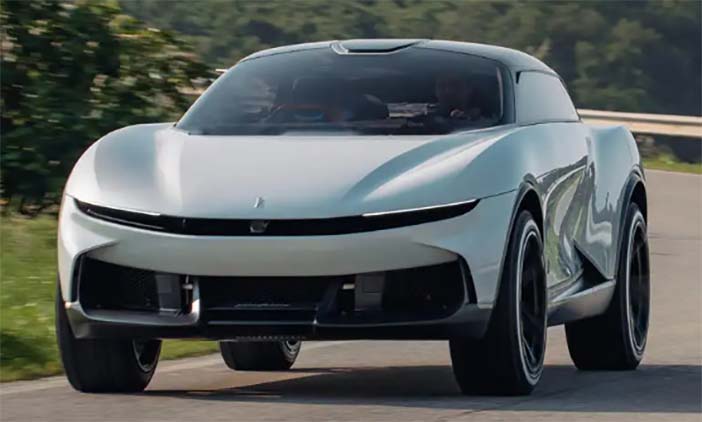
+++ The 12th generation TOYOTA COROLLA is a global player for the Japanese brand and is currently sold in North America, Japan, Europe, China and several other regions around the world. On the Old Continent, there’s a warm version positioned below the full-blown GR Corolla hot hatch. The so-called Corolla GR Sport has an aggressive appearance and a hybrid combustion engine under the bonnet. It was recently tested around the cones to see how good it is in the moose test. The Corolla GR Sport has a naturally aspirated and electrified 4-cylinder petrol engine under the bonnet, good for a peak output of 200 hp and 260 Nm of torque between 4.400 and 5.200 rpm. But as we all know, power is not the deciding factor for a good moose test performance. What is more important, the hatchback has an adjustable suspension with Normal and Sport modes. It rides on 18 inch wheels with Falken Ziex ZE914B tyres on all four corners measuring 225/40. After a few days of tests, the conclusion was that the car feels very nimble and agile on curvy roads. Is the situation the same in the moose test? Even during the very first attempt when the driver doesn’t know how the car behaves, the Corolla GR Sport shows very decent cornering qualities. Sure, the test pilot hits a few cones but it needs just a few more attempts to learn the car and squeeze its best performance. In the end, the speedy hatch registers a maximum speed of 76 kph on the moose test, which is a good result for a car that doesn’t belong to the performance segment. +++
+++ VOLVO ’s lineup in the United Kingdom now looks different. The automaker has removed the S60, V60 and V90 from its lineup, citing the growing demand for its SUVs as interest dwindles in its saloons and estates. Volvo confirmed the changes by saying there’s strong interest in its forthcoming EX30 and EX90 models. In a statement, the automaker said it will “continue to rapidly transform” its product offering. That includes electrification and new platforms, which will have the company evolving and consolidating its lineup as it focuses on transitioning to building fully electric vehicles. The shakeup doesn’t come as a surprise, as Volvo killed the S90 in the country earlier this summer after the S60 was put on hiatus for a brief period late last year. In America, crossovers and SUVs dominate Volvo’s sales chart. The XC40, XC60 and XC90 accounted for 75 percent of the brand’s sales in June. Volvo sold 9.763 examples of the trio out of 12.993 total cars sold for the month, up 53.3 percent. Sales of its plug-in hybrid and fully electric Recharge models accounted for nearly 30 percent, and overall sales for the year are also up in the US by 18.1 percent with 59.750 sales. Volvo’s lineup will continue to change as the brand wants to have a fully electric lineup by the end of the decade. The new EX30 and EX90 are part of that effort, as is Volvo’s investment at its South Carolina factory, which builds the S60 for the US. The upgrades prepared the plant to produce the EX90 and other new EVs, like the Polestar 3. However, eager buyers will have to wait for the XC90 as a software integration issue has delayed its launch. Deliveries are not expected to begin until at least the third quarter of 2024. Production for the EX30 won’t start until late next year, which will be the brand’s cheapest EV. +++


